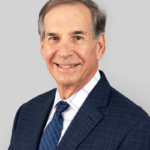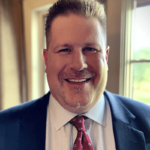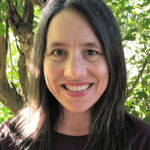Four people – Jan Jenson, Ayesha Lynn Khan, Thomas Kuykendall and Wendy Webster – are running for two city council seats in St. Anthony Village. Jenson is a 12-year incumbent. Webster was appointed to the council in 2019 and is seeking office in her own right. Here are their responses to our questions. Responses have been edited to fit available space.
Jan Jenson

Ayesha Lynn Khan

Thomas Kuykendall

Wendy Webster

Why do you want to serve on the St. Anthony City Council?
Jenson: I am running for a fourth term to the St. Anthony City Council. If re-elected, I will continue to lead ongoing efforts within our city with transparency, honesty, equity, commitment to accountability, and ensuring service delivery equally to all residents. I look forward to developing ongoing civic improvements and I place high value on your input. Since 1982, my wife Marilyn and I have lived in St. Anthony and raised three adult children through our public school system. I recently retired from Honeywell after 38 years.
Khan: I am a lifelong Villager, attending St. Anthony schools K-12. When I graduated, the community identified as over 90% white and only one in five households had school-aged children. Things have changed, as we became more diverse and transitioned to a community where most households have children. I recently spoke to a St. Anthony historian who confirmed that we have had only five female council women in our 76-year history. That is a discouraging disparity in representation, since St. Anthony Village is 52% female, and strong women at that! The council works at the citizens’ behest. It is really important there is a council member each person in the community feels comfortable coming to with ideas and concerns. I will be that person for many people in our diverse community who have previously felt unrepresented.
Kuykendall: I have lived with my family in St. Anthony since 2001 and in those 20 years I have been involved in the community as member of the Planning Commission, Parks Commission, president of the St. Anthony Sports Boosters and a member of the St. Anthony Athletics and Activities Advisory Committee.
Webster: The people in our community inspire me, which encourages me to continually grow as an effective leader who represents St. Anthony. I envision a community where people move in and our arms extend to embrace their family and life experiences because the gifts and talents they share will ensure our community continues to evolve. I want to continue serving on the St. Anthony City Council to foster a welcoming and inclusive community. As a council member, I believe it is my responsibility to ask questions and seek opportunities to ensure our community continues to evolve.
What uniquely qualifies you for the job?
Jenson: I’ve been involved with the Sports Boosters Baseball (14 years), Parks (six years), Planning (four years) and City Council. I’m a member of St. Anthony’s Kiwanis and Historical Societies. I am on the Ramsey County Local League of Governments Board of Directors and was elected to the Metro Cities Board of Directors. These two organizations, along with Hennepin County and Ramsey County, have identified mental health as a rising issue our cities are facing throughout the region. We need to ensure our public safety departments are well equipped to respond effectively to mental health-related calls. My experience at
Honeywell has been helpful when participating with policy-making decisions promoting a positive work environment. Policies that change the City’s operating system will, in turn, shape behavior.
Khan: I am an attorney, and practice criminal prosecution for the City of Saint Paul in the crimes against persons and domestic violence unit. I understand the law, as well as the importance of public safety. I also grew up in a mixed-faith/race household and understand what it feels like to be on the receiving end of racism and discrimination. Through tough, honest conversations from different perspectives, we will grow our understanding of each other, leading to a stronger sense of unity that benefits us all.
Kuykendall: With my experience in various roles within the community and business leadership, I’ve learned how to cut through the noise and get to the heart of the matter, yet in a pragmatic, thoughtful, and respectful manner. I have no competing interests other than to serve those that make our Village what it is today: a walkable, safe and progressive community.
Webster: My husband and I have lived in St. Anthony for 22 years and I have served as the director of community services with the St. Anthony-New Brighton School District for 13 years. Our sons attend St. Anthony Village High School. I serve on the St. Anthony Sister City Association Board of Directors (6 years), St. Anthony Area Chamber of Commerce Board of Directors (six years), St. Anthony Parks Commission as an ex-officio member (ten years), and as a member of the St. Anthony Kiwanis (12 years). I serve as co-chair of the legislative committee for the Minnesota Community Education Association where, for the past four years, I’ve testified at Senate and House Committee meetings and advocated for community education and school-based early childhood programs across the state.
What would you do to encourage more diverse businesses to become part of St. Anthony?
Jenson: We have accomplished many things: In 2013 and 2019, we were awarded City of Excellence. In 2016, we were Sustainable City Winner and joined the Community Solar Garden. In 2017, we built an advanced oxidation plant, removing 1,4-Dioxane, a carcinogen, to ensure a clean water supply. We manage the stormwater filtration station at Lowry and County Road 88. We achieved a GreenStep Level 5 City recognition. We’ve implemented Community Oriented Policing Services, (COPS), resulting in a thorough review and update of all police policies and procedures as well as body camera implementation. Northeast Youth and Family Services (NYFS) provides our police department resources for mental health case follow-up. We are members of Government Alliance on Race and Equity, (GARE), and are now collaborating with the Just Deed Project. We’ve built an organics recycling drop-off, established a Pollinator Pathways project and achieved Tree City USA recognition. Our city is financially strong with the highest rating for one our size at S&P AA credit rating. We have two market-rate affordable housing projects that are not subsidized underway; at 39th Avenue and Stinson Blvd. and on the Bremer Bank site.
Khan: Diverse businesses will come to Saint Anthony if they believe they can succeed. I would be proactive in inviting a broad range of business owners to invest in St. Anthony Village. As the city becomes more diverse (about one in five Villagers identified as non-white in the 2020 census), the idea of opening shop here will be more appealing. Businesses are closing due to COVID and rising crime in Minneapolis and Saint Paul; St. Anthony is a great place to reopen. We have a very supportive community, and as we invite diverse businesses, assure them this is a safe place to open, we also need to remind our residents to shop local, eat local, and support local service providers.
Kuykendall: St. Anthony isn’t a “shovel-ready” city; we simply don’t have the land for a large business to come in and build. The economic performance of the city, the well-being of our population, our high school graduation rates, our proximity to quality colleges and universities, and our great culture are our unique selling points and should be leveraged to create a compelling story to show that St. Anthony is a “talent-ready” community. Future businesses’ growth will not come from traditional channels. We have the ability to connect entrepreneurs and start-ups to capital through our partnership with Open to Business through the Metropolitan Consortium of Community Developers. We should nurture and foster the businesses that already exist and ask them what they need and do what we can to meet those needs. We can do this by ensuring all future guidelines, codes and zoning rules make sense and are clearly enforced.
Webster: Our business community is an essential component of St. Anthony which provides a stable tax base, local employment and job training opportunities. By encouraging a culture of shopping locally, we can support existing local businesses and attract small, diverse businesses to St. Anthony. As consumers, our shopping trends drive business opportunities. There are over 300 businesses located in St. Anthony. When I served as president of the St. Anthony Area Chamber of Commerce, we created a goal to connect with and increase membership among small business owners. We attracted new members by creating opportunities to meet and support self-employed and small business owners in our community such as Raise a Glass to Small Business events and co-sponsored the Shop Small Market held on the Saturday after Thanksgiving.
What are the biggest problems facing SAV right now?
Jenson: Did not answer
Khan: 1) Safety. As the two massive rental projects open to residents, there will be more traffic and potentially more crime. We need to ensure we remain a safe place to walk and for our children to play. We require crosswalks on our busiest intersections, solar-powered street lights, and must take measures to reduce speeding. Property crimes feel violating as well, and those who have had their cars broken into should rest assured this is a community that investigates and holds individuals responsible. Caught breaking into a car in St. Anthony? That person should be shoveling or picking up trash as restitution to the community. 2) School crowding. The elementary school is at capacity, and has been built out to the max; more students will be coming. One solution may be to separate from New Brighton since the Mounds View District. where the remainder of New Brighton falls, has six elementary schools and has contemplated closing one recently. 3) Work with Minneapolis to get a right turn lane from Stinson to Highway 88, a primary route from SAV to 35W. 4) Finally, community healing after facing extreme adversity together.
Kuykendall: It’s important to recognize and directly address problems and it’s foolish to pretend that problems don’t exist. I’d rather look at St. Anthony through the lens of “What would it look like for St. Anthony to be the best it can be?” It’s an important distinction as we continue to improve and evolve, but the foundation for an already great city is there. We have fast response times for our police and fire. Our streets and roads are safe and clean. With no less than a dozen sustainability projects completed or in progress, we are a Step 5 GreenStep City, and if there were a sixth step, we would be there. I’m not convinced we need to implement sweeping policy or infrastructure changes, but rather take a pragmatic approach towards incremental improvements.
Webster: It is critical for St. Anthony to be a welcoming and inclusive community that is walkable, sustainable and safe for future generations. The three biggest challenges facing St. Anthony are: understanding and addressing the impact of social isolation and mental health on the well-being of our community members, retaining naturally-occurring affordable housing in our community and reducing carbon emissions to combat climate change.
List three areas where you think the city can make improvements.
Jenson: By having served for the last 12 years on the City Council, I can provide a historical perspective. To know where you’ve been provides helpful insight as we face new challenges and plan for our future.
Khan: 1) We cannot control the market, but we can control property taxes, which are extremely high compared to neighboring cities. I propose freezing our soaring property taxes through conservative, responsible, and transparent spending practices, while relieving the burden on homeowners through growing local business. Seek sustainable options to save money and additional avenues to generate revenue, such as solar-powered City buildings, adult and youth leagues, facility rentals, and implement additional creative ideas from residents. Explore every alternative revenue-generating option outside of increased property taxes. 2) Make every possible effort to renegotiate with the Lowry Grove developers. St. Anthony Village is not a community that benefits from transient urban density and additional rental properties, especially when they are tax increment financed. These projects do not provide affordable housing, nor generate long term ties to the community. 3) Increase community engagement. I propose borrowing the “Event Wagon” model from our neighbors in Columbia Heights, which is a setup of eight tables, chairs, and various recreational items that the City rents and delivers to residents for a mere $65. We have one Neighborhood Night Out and VillageFest, but the Council can take small, cost effective steps to encourage community engagement and interaction amongst residents.
Kuykendall: We can add curbside organics recycling to our carrier contracts and explore electric and/or reduced carbon emissions options within our city vehicle fleet. We should continue to look for development partnerships for affordable housing and consider all ideas. We should continue to make sure our police and fire have the resources and training they need to allow them keep our citizens and businesses safe.
Webster: Develop a process for community feedback and use data to set goals for continuous improvement and measure our progress toward those goals. Develop a plan to align Tax Increment Financing (TIF) to address the shortage of housing and affordable housing in our community. Currently, 80% of TIF-supported projects went toward the development of age-restrictive housing for people 55 and older, or 37% of our population. Only 20% of TIF-supported projects are for families younger than 55, or 63% of our population.